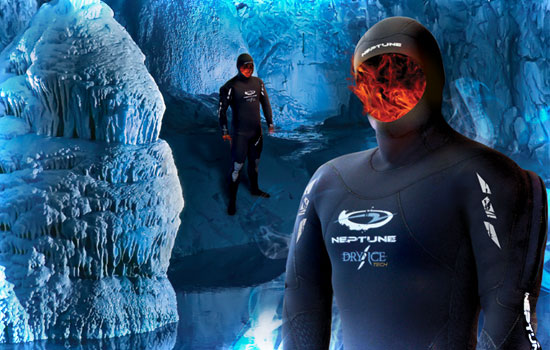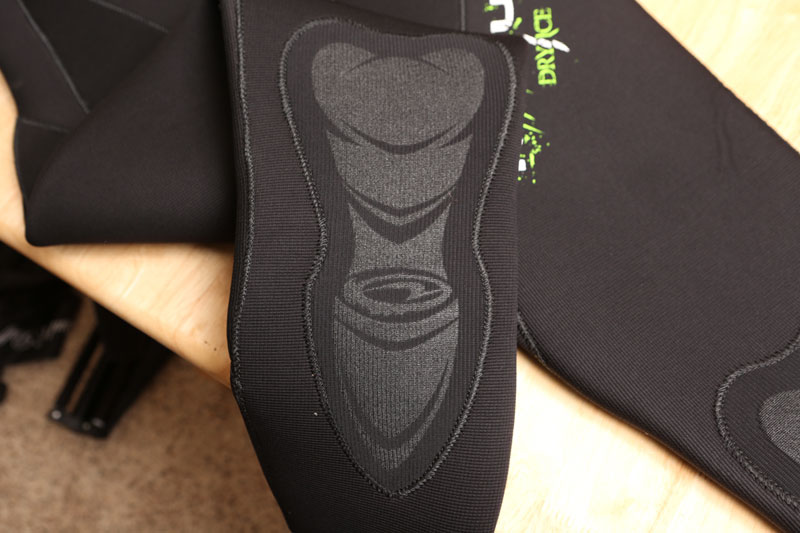I purchased my first wetsuit from an ad out of Skin Diver Magazine. It was a ¼” Farmer John, made by a company called GoSport, and I’m pretty sure I paid about $150 for it. It fit well, was reasonably warm (for the first 100 dives or so) and with the help of some Aqua Seal it lasted many years.
Wetsuits have definitely come a long way since then. New materials, better fit, and better manufacturing have all led to suits that are much warmer, more comfortable, and more durable. Now one company in New Zealand has created a technology integrated into wetsuits that goes far beyond that, and developed a suit that fits exceptionally well, is comfortable, warm, and allows divers to get closer to sea life while diving using a unique new technology called HECS.
Before we talk about HECS technology, we’ll need a little background to understand why it’s beneficial to divers.
A Sixth Sense
Sharks, rays and many other fish species have a sixth sense – the ability of electroreception, which is the biological ability to perceive natural electrical stimuli. Special organs (electroreceptors) allow sharks and other fish species to sense the faint electrical signals given off by living things, and it’s believed that sharks use this sense of electroreception to home in on their prey. On sharks, these organs are located in special pores around their faces. (For a very thorough explanation, you can watch this YouTube video here).
Whenever a living organism (such as a fish) contracts a muscle, it creates a faint electrical charge. In the ocean, that charge travels through the salty water with the help of the sodium and chlorine ions floating throughout it. Those ions possess positive and negative charges, and the fish’s cells are also slightly charged. When the living cells on the fish come into contact with the free-floating sodium and chlorine ions, the ions exchange electrons in order to become more stabilized. That electron exchange then creates a weak voltage that sharks can sense, and they use that ability to hunt precisely underwater. Other life uses that same ability to sense both prey and danger, and react accordingly.
Needless to say, divers underwater are one of those life forms emitting energy. From a heartbeat to even the most miniscule muscle movements, you are giving off energy which can be detected by marine species who have this sense of electroreception. And this is where the HECS technology comes into play.
Blocking your signal
HECS technology is based on the Faraday Cage principle, invented in 1836 by English scientist Michael Faraday. A Faraday Cage is an enclosure made of a conductive grid which blocks electrical fields by channeling the electricity throughout the grid. On land, it’s used to protect electronic equipment from lightning strikes, or in screen rooms to create environments free of electromagnetic interference. You can also see a Faraday Cage at work in the grid pattern on the glass of your microwave oven door.
Using a conductive carbon fiber mesh, HECS Stealthscreen is the only technology that actually blocks your naturally occurring electrical energy field using this same principle. Instead of a steel mesh, the HECS Stealthscreen uses a conductive carbon fiber mesh woven into the wetsuit to block your electrical energy field, making it (and you) virtually undetectable to animals with electroreception.
The effectiveness of this mesh hinges on the size of the mesh relative to the wavelength of the electrical energy itself. The HECS mesh was developed specifically to block the wavelength of the human energy signal. The carbon fiber material is completely flexible and very lightweight – it doesn’t add any weight, bulk, or stiffness to the suit. You won’t even notice it’s there.
4
Getting Closer
The HECS Stealthscreen technology has been incorporated in many other garments for use both on land and in the water to help cloak the presence of humans to animals who can sense them. The Stealthscreen has been incorporated into hunting and wildlife photography clothing as well.
New Zealand filmmaker Dave Abbot is one fan of the HECS suit. “I’ve noticed a marked difference in how close I can approach certain marine life underwater while wearing the HECS suit – a worthwhile advantage for any cameraman.”
HECS is also endorsed by the Pelagic Shark Research Foundation of Santa Cruz, California.
A Warm, Dry Wetsuit
Their latest suit to include the latest HECS Stealthscreen technology is the Neptune Dry Ice wetsuit. It’s a aptly named – the suit is an extra-warm semi-dry suit with shoulder entry, wrist seals, and ankle seals. As cross between a drysuit and a wetsuit, the Dry Ice offers Level 9 thermal protection (Neptune uses a scale of 1 to 10 that defines the thermal protection that all suits offer, and as a Level 9 suit, the Dry Ice is just one step down from a drysuit).
In addition to the HECS technology, the Dry Ice also features an attached hood, which eliminates heat loss in the area where most heat is lost – in the head and neck area. Made from premium quality 7mm neoprene, and the stitching is secure they guarantee it for a lifetime. The suit also features an anatomical preform cut, integrated knee pads, wear patches, a proprietry seam seal process and kidney shaped spine pad. There is also an optional Tech pack which includes bellows leg pocket and accessory pocket.
Unlike my first wetsuit, the Neptune is built to last. If you’re a wetsuit diver looking to have the warmth of a drysuit, or a drysuit diver who wants a great-fitting wetsuit, the Neptune is definitely worth a look. (If you’re still prefer a drysuit, take a look at the HECS undergarments available to help mask your presence underwater).
For more information on the HECS technology, visit hecsgear.com. The new Neptune suit will be available at retailers and online this Fall.



